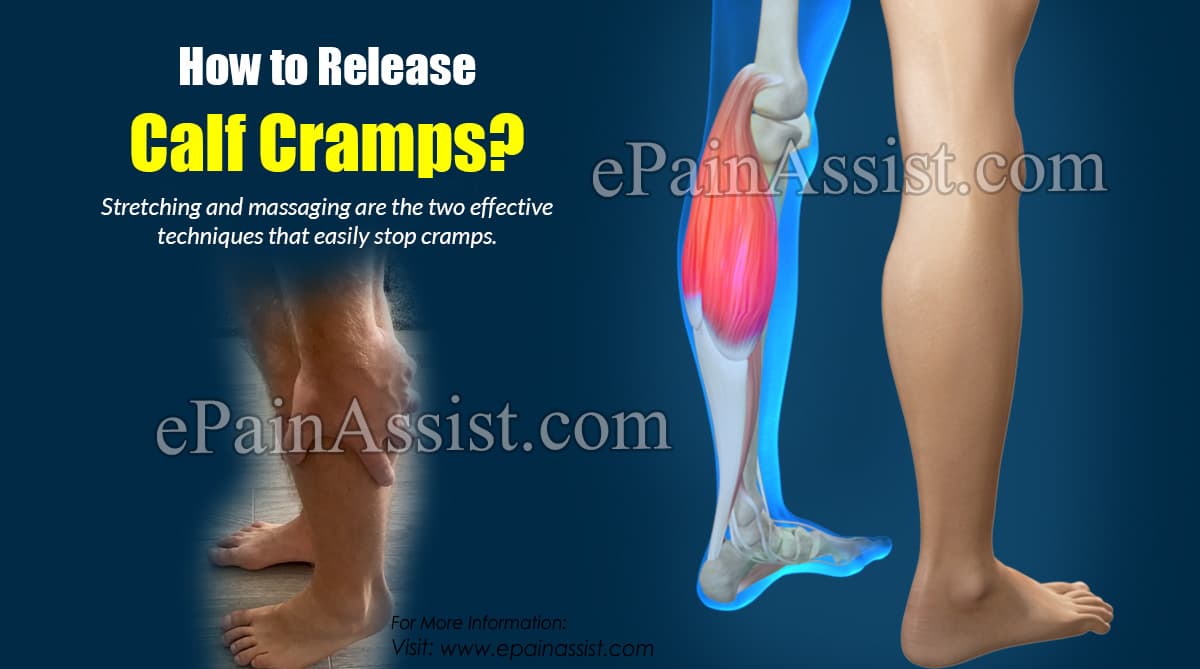A cramp is harmless, sudden and involuntary contraction of one or more of your muscles.1 Cramps usually occur for many different reasons like sitting and lying for a long time, prolonged periods of exercise, dehydration, nerve compression and some medications also may cause cramps. Cramps can also occur in the calf muscles of the legs. During cramps, your muscles suddenly contract, causing pain on your calf. This is known as spams, and it can last from a few seconds to ten minutes.
Generally, most cases of cramps don’t indicate major problems. Individuals who are 65 years or above or drink less water are at greater risk for them. If cramps are affecting your life; for example if they are interfering in your sleep and are causing intense pain, consult a general physician. He will provide a medication that relaxes your cramps. Meanwhile, here is a list of self-measures to release calf cramps easily.

How to Release Calf Cramps?
Following are some of the methods to release calf cramps:
Stretch and Massage the Calf Area: Stretching and massaging are the two effective techniques that easily stop cramps. All you need to do is just stretch the cramped muscles and rub oil on it gently until the cramps feel better. You need to do at least twice if you feel the cramp is returning.
Move Your Leg: Walking may help ease calf cramps because it sends a signal to the muscles that it needs to relax after getting a contraction.
Use Heating Pad to Release Calf Cramps: Another effective method that relaxes cramps is using a heating pad. Whenever you get overwhelming cramps, use a heating pad or a warm water bottle or a warm towel. Whatever the method you choose, place it for 10 minutes on your calf and lay down in a relaxed position. Alternatively, you can also massage the cramped muscles with an ice pack.
Increase Magnesium Intake in Your Diet: Since magnesium plays a vital role in neuromuscular transmission and muscle contraction, a magnesium deficiency is the common cause of calf cramps. So add little bit of magnesium in your diet, it will definitely prevent your body from getting muscles cramps.
Drink Plenty of Water: Many doctors and personal trainers recommended that water is one of the effective and easiest methods that may ward off cramps. According to the World Health Organization, when the level of water decreases in the body, the level of salt, potassium, and magnesium also decreases and this causes calf cramps. So, always drink plenty of water daily to avoid calf cramps.
Vitamin D Intake to Reduce Calf Cramps: One study has suggested that the individual who take Vitamin D supplements experience fewer cramping symptoms. The natural sources of vitamin D are fish oil, beef liver, egg, yogurt, milk, and mushroom.
Stretching Exercise to Release Calf Cramps: The exercise that you need to do to reduce calf cramp immediately is as follows:
- Stand straight
- Now, bring the leg where you do not have cramps forward.
- After that, extend the cramping leg behind placing the foot facing forward and the heel on the ground.
- You can also use a tree or a wall to push against; however, it is not mandatory.
Bent your front leg and shift your weight onto it to feel a complete stretch on the cramping leg behind. Hold this position for 10 to 30 seconds and do it for 5 times to relieve the cramping leg.
These simple techniques will surely release a calf cramp. However, if it doesn’t or the calf cramp is a recurrent problem, do visit a doctor for a thorough check to evaluate the cause of the calf cramp and then the treatment would be done accordingly.
Also Read:
